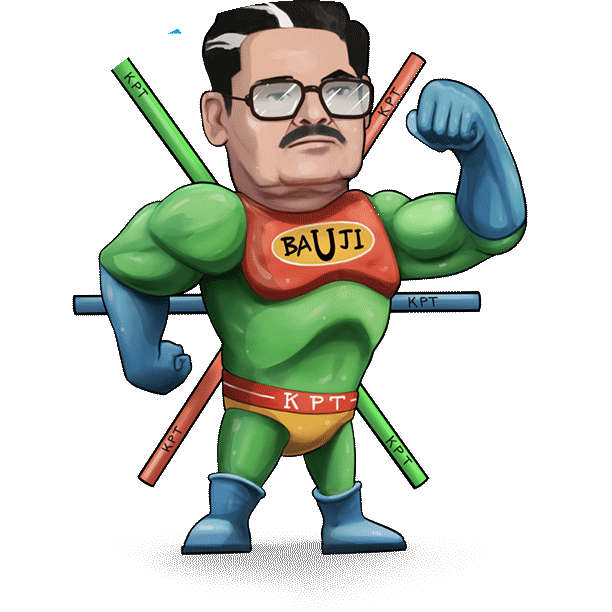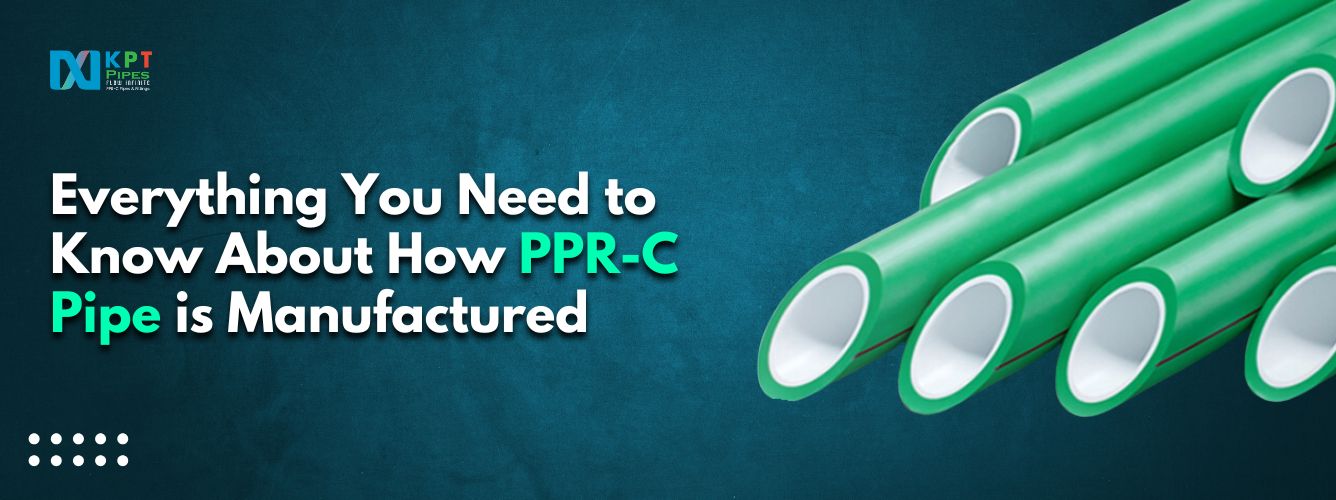In the world of plumbing, heating, and water supply systems, PPR-C (Polypropylene Random Copolymer) pipes have revolutionized the industry with their durability, corrosion resistance, and environmental safety. But have you ever wondered how these high-performance pipes are actually made? Understanding the manufacturing process of PPRC pipes gives insight into their strength and reliability. This blog explores everything you need to know about how PPR-C pipes are manufactured—from raw material selection to the final quality control checks.
Table of Contents
TogglePPR-C Manufacturing Process
1. What is PPR-C?
PPR-C (Polypropylene Random Copolymer) is a type of plastic derived from propylene monomer. It is widely used in piping systems due to its excellent mechanical, thermal, and chemical properties. PPR-C pipes are ideal for both hot and cold water systems, HVAC, industrial liquid handling, and even in food-grade applications.
What makes PPR-C unique is its random polymer structure—a mix of ethylene and propylene chains that enhances flexibility and thermal resistance. These properties are a direct result of a meticulous manufacturing process designed to maintain consistency, quality, and long-term performance.
2. Raw Material Selection
The first and most crucial step in manufacturing PPRC pipes is selecting high-grade Polypropylene Random Copolymer resins. Reputable pipe manufacturers use virgin PPR-C granules, free from contaminants and recycled plastics, ensuring the final product meets safety and performance standards.
The characteristics of raw PPR-C resin should include:
- High molecular weight
- Low melting point (~130°C)
- Resistance to pressure and chemicals
- Non-toxic, food-safe properties
At this stage, the granules may be blended with UV stabilizers, color pigments (usually green, blue, or white), and antioxidants to improve resistance against sunlight and thermal degradation.
3. Melting and Extrusion
Once the material is prepared, the next step involves feeding it into a single-screw or twin-screw extruder. This machine heats the resin to a temperature of approximately 200–250°C, converting it into a viscous molten state.
The extrusion process includes:
- Feeding zone: Granules are loaded into a hopper.
- Melting zone: The screw mechanism and heaters melt the resin.
- Mixing zone: Additives are uniformly distributed.
- Die zone: The molten PPRC is pushed through a die to give it a tubular shape.
The die head plays a vital role in determining the pipe’s diameter and wall thickness. Accurate control ensures the pipe meets the required dimensions as per industry standards such as DIN 8077/8078.
4. Pipe Calibration and Cooling
After extrusion, the hot, soft pipe exits the die and enters a vacuum calibration tank. Here, it undergoes:
- Calibration: The pipe passes through a sizing sleeve that sets its outer diameter precisely.
- Vacuum suction: Ensures the pipe doesn’t collapse under its own weight.
- Water cooling: Cold water sprays or immersion reduce the pipe’s temperature quickly to retain its shape.
This stage is critical for achieving dimensional stability and ensuring the pipe does not warp or shrink. Proper cooling enhances the pipe’s mechanical strength and surface finish.
5. Printing and Marking
As the pipe moves along the production line, it is printed with key identification information such as:
- Brand name or manufacturer
- Pipe size (e.g., 20mm, 25mm, 32mm)
- Pressure rating (PN10, PN16, etc.)
- Standard compliance (e.g., DIN 8077/8078, ISO 15874)
- Date and time of manufacture
- Batch number
This marking is done using inkjet or laser printers, ensuring traceability and regulatory compliance.
6. Cutting and Sizing
The now-cooled and printed pipe moves towards the cutting unit, where it is trimmed into standard lengths—typically 3, 4, or 6 meters depending on market requirements.
The cutting process uses:
- Circular saws for larger diameters
- Shear cutters for smaller pipes
Proper cutting ensures smooth pipe ends, which are essential for heat fusion joining methods used during installation.
7. Quality Control and Testing
Quality is non-negotiable in PPRC pipe production. Manufacturers conduct a series of in-line and post-production tests to ensure the pipes meet performance and safety standards.
Common tests include:
- Hydrostatic Pressure Test: Pipes are filled with water and subjected to pressure to check for leaks or deformation.
- Melt Flow Index (MFI): Measures the flow rate of melted polymer to determine its viscosity.
- Density and Tensile Strength Tests: Assess mechanical strength and material integrity.
- Impact Resistance: Checks the pipe’s ability to withstand sudden forces.
- Thermal Reversion Test: Ensures pipe maintains shape after exposure to heat.
Only pipes that pass all tests are packaged and moved to inventory.
8. Packaging and Storage
Once the pipes are tested and approved, they are bundled, wrapped in plastic films, and labeled for shipment. Pipes must be stored in cool, dry places away from direct sunlight to prevent UV degradation.
Top manufacturers also use barcode tagging and maintain digital batch records to streamline inventory management and logistics.
9. Innovations in PPR-C Pipe Manufacturing
Over the years, technological advancements have introduced several innovations in the production of PPR-C pipes:
- Three-layer PPR-C pipes: These have a middle layer made from fiber or UV-resistant material for added strength and longevity.
- PPR-AL-PPR (Composite pipes): A layer of aluminium is sandwiched between two PPR-C layers, combining metal strength with polymer flexibility.
- Automated SCADA systems: Ensure better real-time process monitoring and quality assurance.
These innovations allow pipes to cater to diverse sectors like residential plumbing, industrial fluid transport, geothermal systems, and compressed air systems.
10. Why Understanding the Manufacturing Process Matters
Knowing how PPR-C pipes are manufactured is important for:
- Builders and contractors: It helps in selecting reliable materials for long-term use.
- Dealers and distributors: Enables better product recommendations to clients.
- End users: Ensures informed decisions about quality, application, and pricing.
- Plumbing engineers: Assists in designing optimal piping layouts with performance benchmarks.
When you choose a pipe manufactured through rigorous quality processes, you invest in durability, safety, and peace of mind.
Final Thoughts
The process of manufacturing PPR-C pipes is a blend of science, engineering, and quality control. From the selection of virgin raw materials to the final inspection, each step contributes to the pipe’s strength and performance. Leading pipe manufacturers like KPT Pipes adhere to global standards and utilize cutting-edge machinery to deliver superior PPR-C pipes for a variety of applications.
By understanding the intricacies of this process, stakeholders can appreciate the value that a well-manufactured pipe brings to any water or fluid management system.
FAQs
Q1. What is PPR-C pipe made of?
Ans: PPR-C pipe is made from Polypropylene Random Copolymer, a type of plastic known for its durability, chemical resistance, and thermal stability.
Q2. How are PPR-C pipes manufactured?
Ans: They are made through extrusion, where PPR-C granules are melted, shaped through a die, cooled, printed, cut, and tested for quality before packaging.
Q3. Are PPR-C pipes suitable for hot water?
Ans: Yes, PPR-C pipes can withstand high temperatures (up to 95°C), making them ideal for both hot and cold water systems.
Q4. What quality tests are done on PPR-C pipes?
Ans: PPR-C pipes undergo hydrostatic pressure testing, melt flow index analysis, impact resistance, and thermal reversion testing to ensure quality.
Q5. What makes PPR-C better than other plastic pipes?
Ans: PPR-C pipes are non-toxic, corrosion-resistant, long-lasting, and maintain excellent thermal and pressure performance over time.



